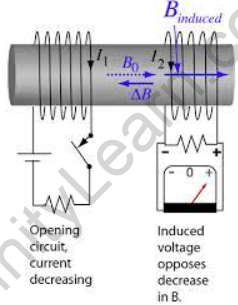Table of Contents
The main operating principle of generators, motors, and transformers is mutual inductance. The same principle applies to any electrical device with components that interact with another magnetic field. The interaction is typically caused by mutual induction, in which current flowing in one coil generates a voltage in a secondary coil. Mutual induction is the property of coils that allows them to oppose changes in current in another coil.
When the current in one coil changes, so does the flow, resulting in EMF in the other coil. This is referred to as mutual induction. The circuit component that represents inductance is known as an inductor, and the term inductance was coined in 1886 by Oliver Heaviside. When two coils are brought close together, the magnetic field in one of the coils tends to link with the magnetic field in the other. This causes the voltage to be generated in the second coil. Mutual inductance refers to the property of a coil that affects or changes the current and voltage in a secondary coil.
The amount of mutual inductance that connects one coil to another is highly dependent on the relative positions of the two coils. If one coil is placed close to the other coil, nearly all of the magnetic flux generated by the first coil will interact with the coil turns of the second coil, inducing a relatively large emf and thus producing a large mutual inductance value.

Mutual Inductance between Coils
The mutual inductance between the two coils can be greatly increased by mounting them on a common soft iron core or increasing the number of turns in either coil, as in a transformer. Unity coupling exists when two coils are tightly wound one on top of the other over a common soft iron core because any losses due to flux leakage are extremely small.
The mutual inductance that exists between the two coils can then be given as, assuming a perfect flux linkage between them.

Principle of Mutual Inductance
A magnetic field is formed in the other coil when a smooth current flows through one coil, as shown in the diagram. That magnetic field remains unchanged, and thus, according to Faraday’s law, no voltage is created in the secondary coil. Now, if we open the switch to stop the current, the magnetic field in the coil on the right-hand side will change, inducing a voltage. Because the coil does not support changes, the induced voltage will cause a current flow in the secondary coil in an attempt to maintain the existing magnetic field. The fact remains, however, that the induced field will always repel change. When the current is interrupted, the switch is closed, allowing the current to flow again. This will result in an induced current, but it will flow in the opposite direction to counteract the change in the field. The fundamental principle of transformers is the consistent formation of opposing voltages in the field, which is referred to as mutual inductance.
FAQs
What is an example of mutual inductance?
When two wire coils are brought close enough together that the magnetic field from one links with the magnetic field from the other, a voltage is generated in the second coil as a result. When a voltage is applied to one coil, it induces a voltage in another. This is known as mutual inductance.
In eddy's current inspection, is mutual induction used?
Eddy currents form and are generated in the test material primarily as a result of mutual induction. The test material is a wire coil that sends alternating current through it. After that, the probe is connected to an eddy core device. The following circuit could be made of any conductive material. When current is passed through a coil, it generates a magnetic field within and around the coil. When a probe is brought close to a conductive material, the alternating magnetic field of the probe causes current flow in the material. These currents flow in closed loops in a plane perpendicular to the magnetic flux.






